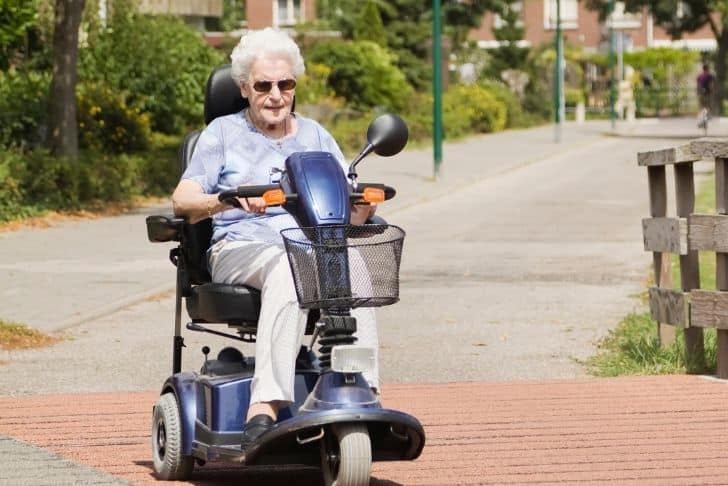If you’re on the hunt for an ideal mobility device to cater to your needs or those of a loved one, “Exploring the Best Mobility Devices for Seniors” will undoubtedly serve as a valuable guide. This article shines a light on a variety of effective mobility aids – from the humble cane, capable of bearing up to 25% of your weight, to alternative tools like walkers and rollators that provide all-around support. On one hand, mobility scooters are suggested for those covering longer distances, while wheelchairs could be a better fit for seniors requiring a higher degree of support.
Moreover, home mobility devices such as grab bars, stair lifts and platform lifts, as well as ramps, are covered in detail. Above all, the guide stresses the importance of finding a tool that promotes activity, fits well, is used correctly, and keeps pace with the senior’s changing needs, ultimately uplifting their quality of life. Prior discussion with medical professionals and family is recommended, as well as test-driving various models from retailers like Mobility Plus Colorado to ensure you make the best possible choice.

Understanding the Need for Mobility Devices in Seniors
The role of mobility devices in improving seniors’ quality of life
As you advance in age, mobility can become a challenge due to various reasons such as injury, illness, or physical changes associated with aging. Mobility devices play a vital role in enhancing your quality of life and help keep you active. They are designed to boost your confidence, improve safety and foster more independence, enabling seniors to continue enjoying their favorite activities without worry.
Understanding seniors’ changing needs and mobility levels
Each individual has unique needs that change over time, especially with age. Seniors may start feeling less sure on their feet or fatigued even after a short walk. This is where mobility devices step in. They are designed to cater to differing mobility needs and levels, from offering basic support for those with mild mobility issues, to more substantive assistance for those who find it difficult to move without substantial help.
The importance of independence and community involvement
One of the key aspects that mobility devices aim to address is the sense of independence. Your ability to move around freely, do daily tasks without any restraints, and interact with the community is an integral part of retaining personal freedom. Mobility devices not only provide physical support but also an emotional lift by reducing dependency and promoting involvement in social activities.
Canes: Basic Mobility Support
Support and functionality of canes
If you’re looking for minimal assistance with balance, a cane might be a suitable mobility device. Canes are designed to support about 25% of your weight. They act as an extension of your arm, providing a third point of contact with the ground, which helps increase stability and balance.
The range of sizes and styles available
Canes come in a range of sizes and styles to cater to individual preferences and needs. This includes adjustable canes, foldable canes, quad canes, and even fashionable ones. Some feature ergonomic handles and tips for added comfort and grip. It’s important to choose a cane that fits your height and weight to ensure it provides the support you need.
Proper usage and fit of canes
Understanding how to properly use and fit a cane is as crucial as the device itself. The cane should align with your wrist when your arm is relaxed at your side. When walking, it should make contact with the ground as your opposite foot does. Consulting with a healthcare professional can help ensure that your cane is properly fitted and you’re using it correctly.
Walkers and Rollators: All-Around Support
Difference between walkers and rollators
If you need more support than a cane can provide, walkers or rollators may be a good choice. Walkers are generally lightweight, robust devices with frames that surround the user, while rollators are essentially walkers with wheels, enabling easier and smoother mobility.
The degree of support provided by walkers and rollators
Both walkers and rollators provide excellent support, allowing you to bear up to 50% of your body weight on the device. They offer more stability than canes and are ideal if you have general weakness or balance concerns.
Choosing between a walker and a rollator
The selection between a walker and a rollator largely depends on your strength, balance, and endurance. If you have good balance but need extra support, a rollator might be the best fit. On the other hand, if you need a greater degree of support and stability, a walker might be more suitable.
Mobility Scooters: For Long Distance Mobility
Ideal users of mobility scooters
If you tire easily when walking long distances, a mobility scooter may be the right choice for you. These devices are particularly useful if you have heart or lung issues that limit your endurance, allowing you to comfortably cover more ground.
Diversity in size, functionality, and available accessories
Mobility scooters vary widely in size, functionality, and the availability of accessories. This allows you to tailor your device to your specific needs and preferences and make your journeys more comfortable and enjoyable.
Considerations when choosing a mobility scooter
When choosing a mobility scooter, you should consider factors like battery life, weight capacity, turning radius, speed, comfort, and ease of assembly and disassembly. These aspects will determine its suitability for your daily tasks and the environments in which you plan to use it.

Wheelchairs: Intense Support Device
Different types of wheelchairs: manual, transport, and power
If you need more support than a walker or scooter can provide, wheelchairs come in three primary types: manual, transport, and power. Manual wheelchairs are self-propelled by the user, transport chairs are intended to be pushed by a caregiver, and power wheelchairs are motorized.
Choosing the right type of wheelchair
The choice of wheelchair depends on your specific needs, level of mobility, and your physical condition. You’ll want to consider the chair’s comfort, adjustability, easy in-and-out access, and maneuverability in your environment.
Comfort and adjustability in wheelchairs
Comfort is paramount in a wheelchair, given the extended periods you might be seated in it. Good wheelchairs offer adjustable seat heights, footrests, and armrests to ensure a comfortable fit. Cushioning and back support further improve comfort and reduce the likelihood of pressure sores.
Home Mobility Devices
Understanding the need for home mobility devices
In addition to the personal mobility devices discussed, there are also devices designed to enhance mobility within the home. These include grab bars, stairlifts, vertical platform lifts, and wheelchair ramps which can make daily tasks easier and safer.
Pros and cons of stairlifts
Stairlifts can be a great solution if you have difficulty navigating stairs. They provide a smooth, comfortable ride up and down, reducing the risk of falls. However, stairlifts can be expensive, require professional installation, and may not be suitable for all types of staircases.
Insights into vertical platform lifts
Like stairlifts, vertical platform lifts can help you overcome obstacles such as steps and porches. These lifts are like small elevators, raising you and your mobility device from one level to another. They must be professionally installed and require more space than stairlifts.
Benefits of wheelchair ramps
Wheelchair ramps allow you to kindly navigate steps and other eateries in a wheelchair or scooter. They can be portable or permanently installed, and are often the most affordable home mobility solution.
Placement and use of grab bars for support
Grab bars provide extra support when rising from a seated position, especially in slippery areas like bathrooms. They can be positioned in various locations around your home to help you move more confidently and independently.

Choosing the Right Mobility Device
Importance of fitting and correct usage
The right fit and correct usage of mobility aids are critical for your safety and comfort. A device that is too heavy, too high, or not sturdy enough for your weight can lead to falls or other injuries. Therefore, it’s advisable to get professionally evaluated and fitted for your device.
Considerations when choosing a device suitable for various environments
You should also consider where and how often you’ll use the device. Think about your regular activities and the terrain you generally cover. Also consider how you will transport the device in a car or other means of transport.
Discussing options with healthcare professionals and family
It can be helpful to discuss your options with healthcare professionals and your family. They can offer useful insights and manage medical aspects contributing to your mobility challenges. Your doctor, physical therapist, or occupational therapist can be useful resources during this process.
Trying Out Mobility Devices Prior to Purchase
Importance of testing different models
Before purchasing a mobility device, it’s crucial to try out different models to find the one that most comfortably and efficiently suits your needs. This hands-on experience can make a significant difference in finding the right fit.
The role of showrooms in choosing a mobility device
Showrooms offer a variety of mobility devices under one roof, allowing you to test and compare different models. This experience can provide you with a realistic idea of the functionality and ease of use of various devices.
Experience at Mobility Plus Colorado
Retailers like Mobility Plus Colorado provide an excellent platform to explore various mobility devices. You can take your time, ask questions, and find the device that fits your needs in a no-pressure environment.
Financial Considerations for Mobility Devices
Understanding the cost spectrum of mobility devices
Mobility devices span a wide cost range, from affordable canes to higher-priced power wheelchairs or home mobility equipment. When considering your device, it’s crucial to be mindful of your budget without compromising on essential features.
Availability of insurance and subsidies
Certain insurance plans and government programs might cover part or all of the cost of your mobility device. Be sure to research and understand what financial support is available to you to help offset these expenses.
Factors affecting the final cost of mobility devices
The final cost of your mobility devices could depend on factors like the brand, extra features, accessories, customizations, shipping, and installation. Take these into consideration as you budget for your device.
Maintenance and Care of Mobility Devices
Routine maintenance and care for longevity
Just like any piece of equipment, your mobility device will last longer and work better with regular maintenance and care. This can include basic measures like regular cleaning, checking for loose screws, and tire pressure, as well as professional check-ups for wheelchairs or scooters.
Understanding warranties and service terms
Before purchasing, understand the warranty and service terms that come with your mobility device. Know what’s covered, the warranty duration, and any services that the manufacturer or retailer provides.
Dealing with wear and tear, and potential replacements
All mobility devices eventually face wear and tear. Regular inspections can help detect minor issues before they become major problems. Despite your best efforts, you might eventually need to replace your device. Plan for this eventuality so it doesn’t come as a surprise when the time comes.
